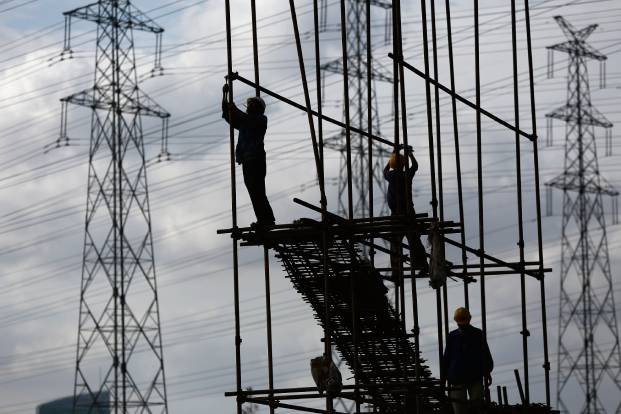China’s regional banks could take a 2-trillion-yuan ($300-billion) hit from the deepening debt crisis affecting local governments, according to a report by S&P Global Ratings.
The report, issued on Wednesday, said regional lenders have high exposure to local government financing vehicles (LGFVs), that provincial authorities set up for spending on infrastructure and other purposes.
Local government revenue from land sales plunged by close to 20% over the first eight months of this year and there is concern over default risks because of the dramatic slowdown in the property sector.
S&P Global Ratings estimates that regional banks in China had about 12 trillion yuan of exposure to LGFVs at the end of last year.
ALSO SEE: China’s EV Battery Giant CATL Profit Eases on Slower Demand
Regional banks may ‘feel the most pain’
It said 20% of the 80 regional banks sampled by S&P could fall below the minimum regulatory capital adequacy ratio of 8%.
In a bad-case scenario LGFVs may need debt restructuring and regional banks in lower-tier cities would need to inject fresh capital.
“Regional banks with concentrated exposure in resource-constrained regions, most of them in lower-tier cities, will likely feel the most pain. And for some of these banks, the pain could be too much to bear by themselves,” the report said.
Banks with major exposure to LGFVs included the Bank of Chongqing, Bank of Chengdu and Bank of Hangzhou.
S&P said the central government was likely to step in if local governments could not maintain financial stability, as it said several months ago it would seek a solution to their debt woes.
Moody’s Investors Service estimates that 17 provincial governments have issued 700 billion (close to $96 billion) worth of refinancing bonds totalling to repay LGFV debt since last month.
But the overall size of local government debt has been estimated at $13 trillion as borrowing has spurred the country’s economic growth over recent decades.
Property market still flat
The property sector’s debt crisis – with the two biggest private developers, Country Garden and China Evergrande, both now likely facing complex debt restructuring plans – has exacerbated the problems that local governments face, as many of their hundreds of projects were in lower-tier cities.
The property market is showing little signs of a recovery in the short-term despite a series of government stimulus measures to help revive activity in the sector, which makes up a quarter of the nation’s economic output.
Homebuyers, wary of the uncertain economic outlook, have remained on the sidelines, while property developers and agents said sales were still soft following a short-lived burst of activity in major cities such as Beijing and Shenzhen.
China has quickened the pace of policy stimulus in recent weeks, but the support measures have yet to have any notable impact among buyers still grappling with low confidence.
China’s new home prices fell for the third straight month in September, down 0.2% from August, a traditionally peak home buying period, official data showed on Thursday.
- Jim Pollard with Reuters
ALSO SEE:
Country Garden Seen Defaulting on Its Offshore Debt
China’s Property Sector Will Remain Weak For Years: Goldman
China’s $13tn Provincial Debt Crisis Threatens to Spill Over
























